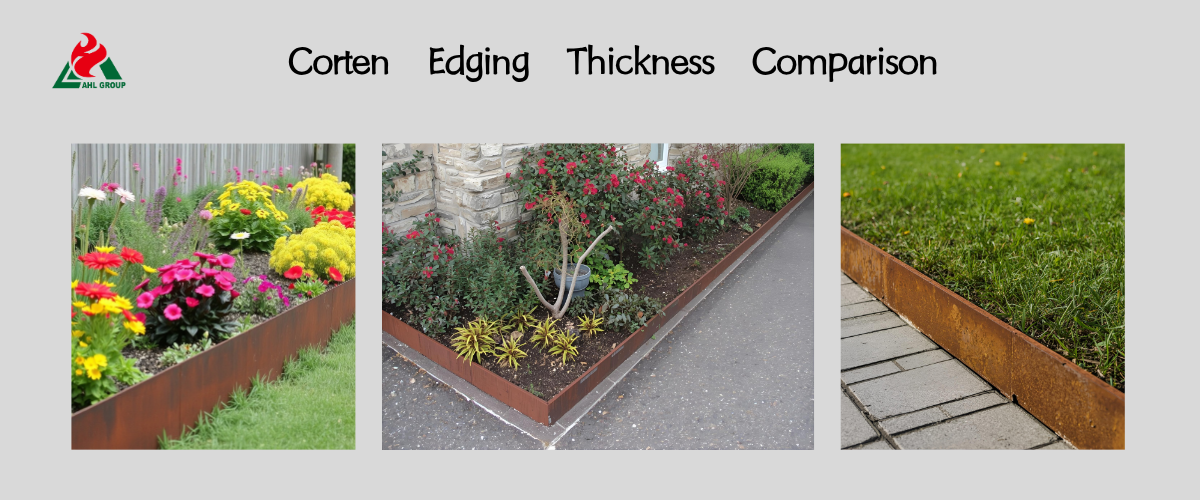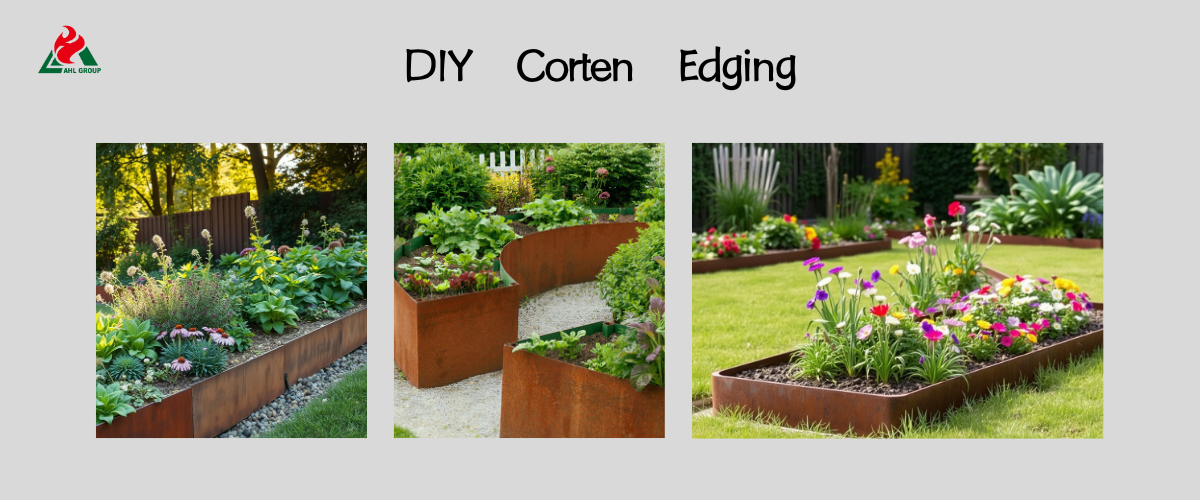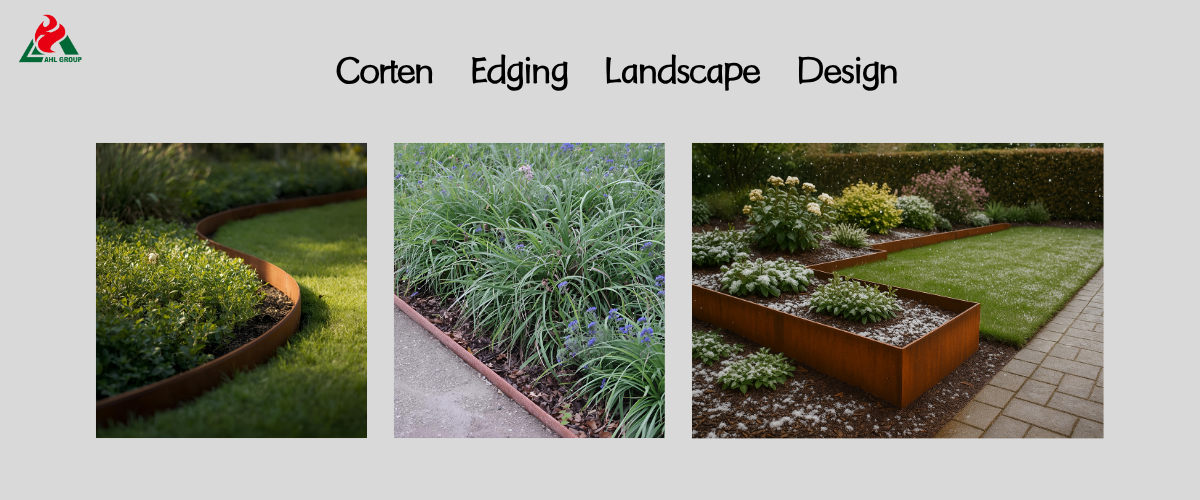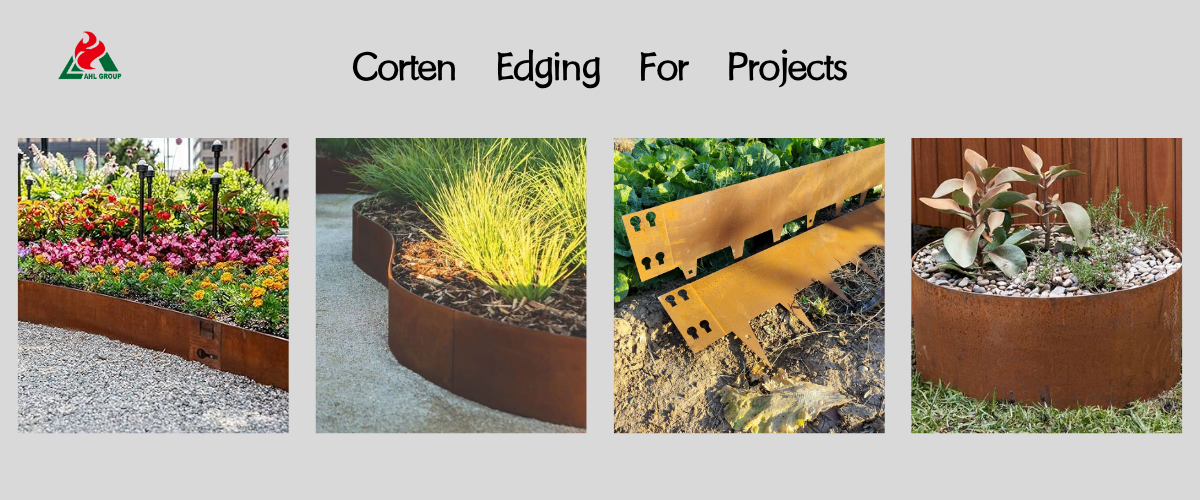When planning landscape renovations, achieving clean lines and durable contours is paramount. Corten steel landscape edging has rapidly become the preferred choice for architects and high-end landscape designers due to its stunning rustic patina and exceptional durability. However, for many DIY enthusiasts and homeowners, the primary concern remains cost: Is Corten Steel Edging Expensive?
As a leading manufacturer of Corten steel products, AHL Group understands the importance of cost-effectiveness. Simply put, while the initial cost of weathering steel is indeed higher than many alternatives, its total cost of ownership (TCO) is highly competitive and often proves more advantageous in the long run. This guide will thoroughly analyze the true value and cost structure of Corten steel borders, helping you plan your budget with precision.

As a leading manufacturer of Corten steel products, AHL Group understands the importance of cost-effectiveness. Simply put, while the initial cost of weathering steel is indeed higher than many alternatives, its total cost of ownership (TCO) is highly competitive and often proves more advantageous in the long run. This guide will thoroughly analyze the true value and cost structure of Corten steel borders, helping you plan your budget with precision.

Introduction to Corten Steel Landscape Edging
Understanding material properties is the first step in evaluating its value. Corten edging is specifically engineered for harsh outdoor environments, setting it apart from ordinary low-carbon steel or plastic solutions.
The Rising Popularity of Weathering Steel
The rise of industrial-style garden aesthetics has fueled demand for Corten steel edging. It provides a clean, modern definition for flower beds, pathways, and lawn borders, transforming ordinary garden boundaries into striking architectural details. Its unique, evolving patina makes it a focal point in any landscape design.
Key Characteristics of Weathering Steel
Weathering steel (also known as A606-4/ASTM A588) is a high-strength, low-alloy material. Its defining feature is the protective patina that forms on its surface. This dense, self-sealing layer effectively blocks deep structural corrosion, ensuring the edging remains truly maintenance-free—requiring no painting or sealing—and enhancing its long-term economic value.

Factors That Influence the Cost of Corten Edging
The price per foot for Corten steel garden edging is not fixed, as it is influenced by various manufacturing processes and specification parameters. Understanding these factors helps accurately formulate project budgets and make more informed purchasing decisions.
Material Thickness and Specifications
The primary cost driver is steel thickness (or specification). Thicker specifications offer greater structural rigidity and resistance to lateral pressure (such as from vehicle tires or heavy soil loads), resulting in a higher price per unit length.
• Light Specifications (e.g., 14-16 gauge/1.5mm): Suitable for shallow planters and straight borders, offering lower costs.
• Heavy Specifications (e.g., 10 gauge/3.0mm): AHL Group frequently recommends these for curved retaining walls, high-stress areas, or commercial projects demanding ultimate durability. Higher cost reflects superior performance.
Panel Height and Project Total Length
The height of Corten steel garden edging (e.g., 100mm vs. 300mm) directly impacts the required raw material quantity, thereby increasing costs. Additionally, the project's total length influences pricing; most manufacturers, including AHL Group, offer significant volume discounts for large commercial orders or long-distance residential projects.
Custom Fabrication vs. Standard Specifications
Custom-fabricated Corten steel edging (involving special bending, laser-cutting intricate patterns, or pre-welding corners) incurs higher labor and equipment time costs than standard pre-cut edging. If designs include sharp turns or special-angle joints, the unit price per section will increase accordingly.
Geographical Factors and Supplier Markups
Global steel prices, transportation costs (due to material weight), and supplier business models all influence pricing. Direct procurement from manufacturers like AHL Group typically bypasses distributor markups, enabling more competitive pricing for premium Corten steel products.

Cost Comparison with Alternative Materials
Although the initial price of weathering steel may seem high, a true cost analysis for landscape edging must factor in installation labor, required accessories, and material lifespan.
Corten Steel vs. Plastic/Composite Edging
• Initial Cost: Plastic/composite edging is significantly cheaper (typically half the price or less).
• Lifespan and Maintenance: Plastic degrades under UV exposure, cracks in winter, and requires frequent replacement. Weathering steel requires minimal long-term maintenance and lasts for decades.
• Conclusion: While weathering steel has higher upfront costs, it offers lower overall costs over a 15-year cycle by eliminating replacement expenses.
Corten Steel vs. Aluminum and Galvanized Steel Edging
• Initial Cost: Aluminum and galvanized steel are typically comparable in price to weathering steel or slightly lower.
• Lifespan and Maintenance: Aluminum is softer and prone to bending or denting. Galvanized steel eventually requires repainting or recoating. Weathering steel offers superior durability without manual maintenance, thanks to its strength and rust-protective layer.
• Conclusion: Corten steel achieves the optimal balance between structural strength and maintenance-free, glaze-like durability.
Corten Steel vs. Stone/Concrete Edging
• Initial Cost: Stone or concrete typically costs significantly more due to high material expenses and complex installation requiring professionals for trenching, mixing, and curing.
• Lifespan and Maintenance: Both offer exceptional durability.
• Conclusion: Weathering steel offers faster, simpler installation suitable for DIY projects, significantly reducing labor costs compared to masonry construction.
Determining if Corten Edging Fits Your Budget
To make Corten steel borders cost-effective, meticulous planning is essential, with material specifications prioritized based on functional requirements.
Project Budgeting Techniques
• Thickness Prioritization: Use thicker Corten steel specifications (e.g., 3.0 mm) only in high-stress areas like retaining walls. Opt for thinner gauges (e.g., 1.5 mm) for decorative borders to reduce costs.
• Optimize Shipping: Given the substantial weight of weathering steel, consolidate all material orders to integrate freight costs.
• DIY Installation: Weathering steel edging typically employs simple stake-and-nail systems. Confident homeowners can save thousands by installing it themselves instead of hiring professional landscapers for boundary construction.
How to Save Costs While Maintaining Quality
As a direct manufacturer, AHL Group recommends focusing cost savings on labor and design complexity, not material quality. Always use authentic A606 weathering steel, not cheaper common steel—the latter fails to develop a stable protective rust layer and will eventually corrode away. A small investment in premium materials now avoids costly replacement labor five years down the road.

Conclusion: When to Choose Corten Steel Edging
The question isn't whether weathering steel edging is expensive, but whether it delivers the best long-term landscape value.
Weathering steel is the superior choice when you prioritize these qualities:
• Durability: 40+ year lifespan with zero maintenance requirements.
• Aesthetic Value: Unique deep rust patina enhances design appeal.
• Strength: Exceptional resistance to damage and deformation.
If budgets are extremely tight and the project is temporary, cheaper materials may suffice. However, for any long-term, high-quality landscape investment, the cost-effectiveness of Corten steel borders makes them a wise financial decision that stands the test of time.


